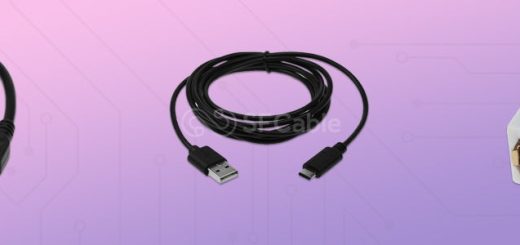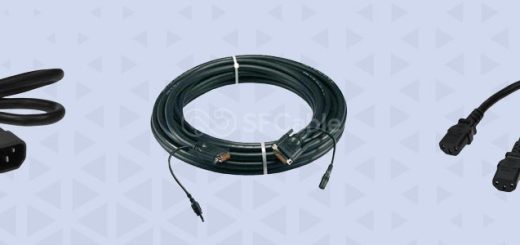Ultimate Guide to Outdoor Power Strips: Buyer’s Tips
Introduction
Outdoor installations are no longer just basic lighting or social gatherings. From game rigs to mobile data centers, the need for dependable outdoor power is increasing rapidly. Powering several devices outdoors presents serious challenges—few outlets, knotted cords, and weather hazards.
Extension cords, in most instances, simply fall short of safety or performance requirements. This is where an outdoor power strip is critical. Built to withstand rough conditions, an outside power strip offers organized, streamlined access to power without the clutter.
Whether it’s a water-resistant outdoor power strip for an off-site workstation or an outdoor electric power strip for an outdoor business function, the proper solution is good for performance and safety. For teams operating outside walls, the proper power configuration makes the difference.
Understanding Outdoor Power Strips
1. Definition and Purpose
An outdoor power strip is designed to provide power to several devices in outdoor environments. It is employed where indoor power alternatives are not reliable or safe. Such locations include outdoor events, workstations, gaming stations, or temporary server areas.
The aim is to maintain power supply without exposing equipment to damage from moisture, dust, or temperature fluctuations. It enables users to plug in several devices while being well-organized and safeguarded.
These power strips also ensure smooth functionality even outdoors. They’re a pragmatic option for professionals who operate outside controlled indoor areas.
2. Key Differences from Indoor Power Strips
An outdoor power strip is different from an indoor strip. It’s designed to withstand outdoor weather conditions such as rain, heat, and dirt. Indoor strips do not have waterproofing and can short out when used outdoors.
Most outdoor strips, such as a waterproof outdoor power strip, have sealed outlets and caps. This prevents water from entering and shorting out. An outdoor power strip is also constructed with tougher materials to be used over the long term.
The construction of an outdoor power strip prioritizes safety, which is imperative in high-traffic configurations such as data centers or gaming parties outdoors.
Core Benefits of Outdoor Power Strips
1. Weather Resistance
Outdoor power strips are made to function in rain, dust, and damp environments. IP ratings such as IP44 or IP65 indicate the level of resistance the unit has against water and particles.
These ratings come in handy when positioning power strips close to grass, concrete, or outdoor equipment. Heavy-duty plastic and rubber materials protect the inner components. They also guard against rust and damage. This guarantees that power is transmitted safely even when weather conditions change rapidly.
2. GFCI Protection
Most outdoor power strips come with Ground Fault Circuit Interrupter (GFCI) protection. This turns off power immediately if a current leak is sensed. It’s one of the best methods to prevent electric shock outdoors.
It provides an added layer of protection when using power around wet surfaces or metal tools. GFCI is usually mandated in job sites and commercial areas. Adding it to your strip makes the installation compliant and safer. It’s particularly helpful for companies or tech conferences outdoors.
3. Surge Protection
A robust outdoor configuration should safeguard equipment against power surges. Outdoor surge-protected power strips take the impact of sudden voltage spikes. This shields connected equipment from unwarranted damage. It’s particularly handy when used to power gaming equipment or network devices.
Voltage fluctuations may occur due to grid changes or malfunctioning outlets. Surge protection helps prolong the life of devices and makes them work more efficiently. It’s an intelligent method of safeguarding valuable equipment outdoors.
4. Overload Protection
Overload protection avoids too many devices pulling more power than the strip can supply. When the load is excessive, it turns off to prevent overheating or fire. This feature is not always considered, but it is essential for safety. It keeps the power strip within safe operating boundaries.
In configurations with multiple plugs, such as outdoor server racks or audio/video systems, it prevents the system from becoming unstable. It also keeps away from downtime due to electrical malfunctions. Such reliability is vital to business processes.
5. Device Compatibility
Outdoor strips provide multiple outlets and sometimes USB ports for different devices. That is, you can connect laptops, cameras, network switches, or chargers at a single location. It eliminates the use of multiple cords and adapters.
Less wire equates to less mess and fewer hazards from tripping over it. It also facilitates quicker and easier setup. This convenience is perfect for temporary stations or mobile operations. A weatherproof outdoor power strip has no problem accommodating small and large installations.
6. Long-Term Durability
An outdoor power strip is designed for the long term. It withstands rain, wind, sun, and temperature fluctuations. Materials do not fade, crack, or rust with time. Performance remains even with daily usage.
This ruggedness translates to fewer replacements and less long-term expense. For data centers or field crews working outdoors, it is a dependable power source. It maintains operations without constant upkeep.
Practical Applications of Outdoor Power Strips
1. Garden and Lawn Equipment
An outdoor power strip is best suited for powering garden tools. Devices such as hedge trimmers, mowers, and leaf blowers usually prefer the outdoor charge to operating. Using a power strip helps clean up the mess of cords and keeps them safe from wet grounds.
It thus keeps from running long extension cords through windows or doors. Provided the weather resistance is supported, the power strips can stand outside while the work goes on. It augments more efficient work for a homeowner. That also maintains safe landscaping.
2. Outdoor Lighting and Home Entertainment
Exterior power strips work fine for patio lights, speakers, and projectors. Manufacture seasonal limits, said, and troubles multiply with the multiplication of outlets outside. These power strips can power string lights, smart lighting, and audio systems at the same time.
Some models have USB ports so that you can charge your cell phone during a party. Their waterproof build allows them to stay in place during light rains or dew. They create all-weather power at these locations without having to unplug frequently, which enhances safety and convenience for the home users.
3. Commercial and Temporary Events
Markets, outdoor pop-ups, and event stands are all great settings for outdoor electric power strips. Exhibitors and event personnel require steadfast power for displays, lighting, and payment systems.
Weatherproof strips prevent interruptions related to weather or inadvertent spills. They also make cable clutter down in a congested event area. They are used in construction sites to keep power to the tools and the job site lights.
The safety features make them suitable for wearing conditions. Thus, ensuring smooth and uninterrupted commercial operations.
4. Recreational and Travel Use
A waterproof outdoor power strip is a useful accessory to RVs, camping excursions, or tailgating. Campers can plug in stoves, portable refrigerators, or charging stations simultaneously. These strips minimize the use of multiple adapters and can function with portable power sources.
They are easy to transport due to their rugged and compact design. When the weather shifts rapidly, they still function without risk. This facilitates safe outdoor recreation among groups and families. It’s a great solution for contemporary travel demands.
5. Business Continuity in Remote Setups
Companies operating remote sites, such as network testing areas or data tents, require clean and safe power outside. Outdoor power strips allow for juggling many devices, such as routers, laptops, and monitors. They enable quick deployment and takedown while keeping equipment dry and safe from overload.
This is particularly beneficial for IT staff operating away from the office. The strips ensure equipment is always operational. It’s an easy piece of equipment that enables sophisticated, real-world business applications outside.
Choosing the Right Outdoor Power Strip
1. Count the Number of Devices
Start by checking how many devices need powering from outdoors. This will help identify how many outlets must be on the outdoor power strip. Consider devices in use now and any that might be added later.
For instance, a network set-up may require outlets for a router, for cameras, and for cooling fans. Having too few ports means bringing out adapters, which either clutter things up or simply overload. More outlets mean less daisy-chain. Proper matching provides stable and safe connections.
2. Calculate Total Wattage Requirements
A watt rating is given to any equipment; hence, one should ensure that the total wattage from the devices does not exceed the power strip’s rated capacity. When an overload situation exists, the potential exists for the breaker to trip or the line attached to the unload gear to be damaged.
The rating consideration is very important for high-draw items such as a monitor, lighting, or electric power tools. Checking for wattage prevents overheating of wires and ensures efficient running of the system, and for an added level of safety, consider a strip that has overload protection. Match the watt requirements with the rating on the product.
3. Check for Safety Certifications
Safety listings confirm that the power strip complies with the national or international standards for safety. Look for UL, CE, or ETL marks on the product.
These ensure that the unit has undergone testing and has been declared accepted for making electrical safety requirements, i.e., fire resistance. Upon using a certified product, the chances of receiving a shock, causing a fire, or facing a failure during operation are minimized.
This is very crucial, especially when being used outside, where the environment is not as controlled. Without the proper certification, its reliability can never be guaranteed. A company should only invest in strips that have approved certifications.
4. Select Weatherproof Options
Here lies a huge difference for an indoor strip, considering resistance to moisture and debris that can damage the units. For such a weather-rated unit, consider an IP65-rated one that can protect from rain and dust.
This comes very handy when one is working in the garden, at some outdoor events, or at other remote sites. A waterproof outdoor extension should stay connected when everything around it is soaking wet. This aids in preventing accidental shorts and improves uptime.
5. Evaluate Extra Features
Some outdoor electric power strips offer added functionality. Built-in timers facilitate energy management by shutting off devices after a certain time. Smart controls allow remote control and scheduling from app interfaces.
Mounting brackets or stake bases allow for various installation options. These extra features streamline implementation for outdoor operations. Useful for small or recreational purposes. Select features according to your needs and work environment.
6. Check Cable Length and Build Quality
Cable length and thickness confound usability and safety. Short cables hinder placement, and a thinner cable will heat up more quickly. Get one with a heavy-duty cord that will not stretch to the outlet.
The cord insulation must resist any ripping apart, UV attack, and water exposure. A sturdy build should be able to withstand all the havoc thrown at it from a busy and harsh environment. It gives you consistent performance for a considerable time, even being used daily.
Do’s and Don’ts When Using Outdoor Power Strips
Do’s
- Do use outdoor-rated power strips with proper IP ratings.
- Do keep all plugs and connections off the ground.
- Do check the strip’s wattage capacity before use.
- Do inspect cords and outlets regularly for damage.
- Do use GFCI-protected outlets when available.
- Do store the strip indoors when not in use for long periods.
Don’ts
- Don’t use indoor power strips outside.
- Don’t expose the power strip to standing water.
- Don’t overload the strip with high-wattage devices.
- Don’t cover the strip with rugs, mats, or plastic.
- Don’t use damaged cords or plugs.
- Don’t daisy-chain multiple power strips together.
Conclusion
All about outdoor setup planning needs to consider the devices themselves. Power must be safe, stable, and ideally, made to a heavy-duty outdoor power strip serves this purpose. From powering garden tools to supporting the racks for mobile networks, it tackles the real-world requirements.
Be it a rugged power strip for an outdoor event or a waterproof strip to withstand the unpredictable weather, choices affect not only the safety of people but also that of their equipment. A heavy-duty outdoor power strip adds safety, reduces clutter, and allows the teams to concentrate on their work.
Convenience should come next to choosing a quality strip: working smart wherever the job takes you.
FAQs
Can power strips be used outdoors?
Yes, but only if they are made for outdoor use. Regular indoor power strips are not safe for wet or dusty conditions.
What type of power strip can I use outdoors?
Use a power strip that is weather-resistant and has a proper IP rating. It should also have safety features like GFCI and sealed outlets.
Is there a difference between indoor and outdoor power strips?
Yes, outdoor power strips are built to handle water, dust, and temperature changes. Indoor ones do not offer the same level of protection.


